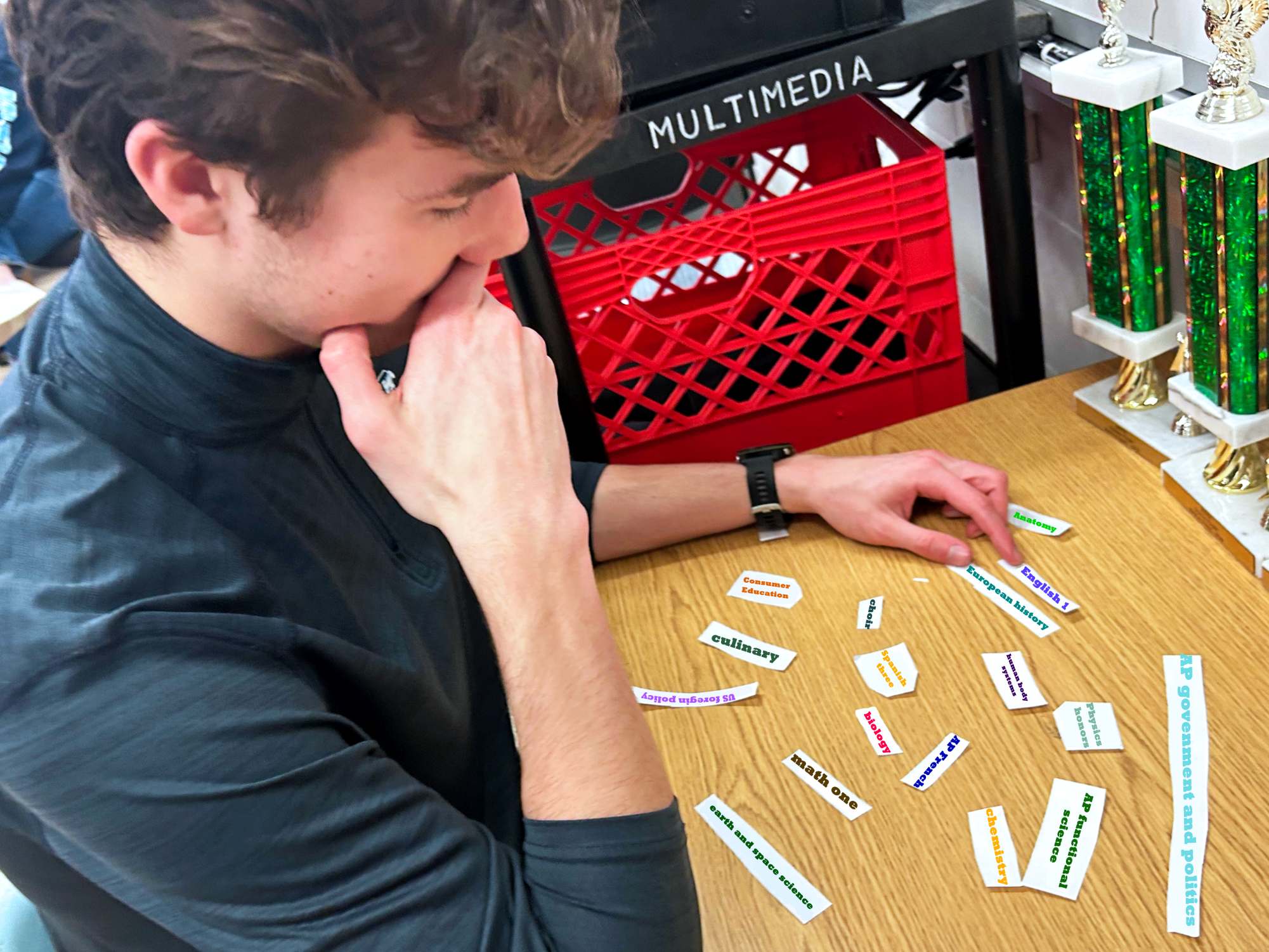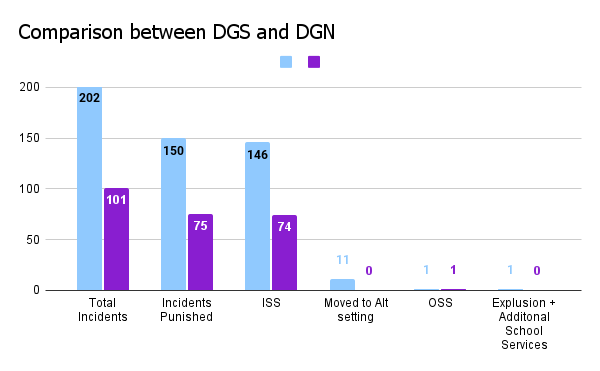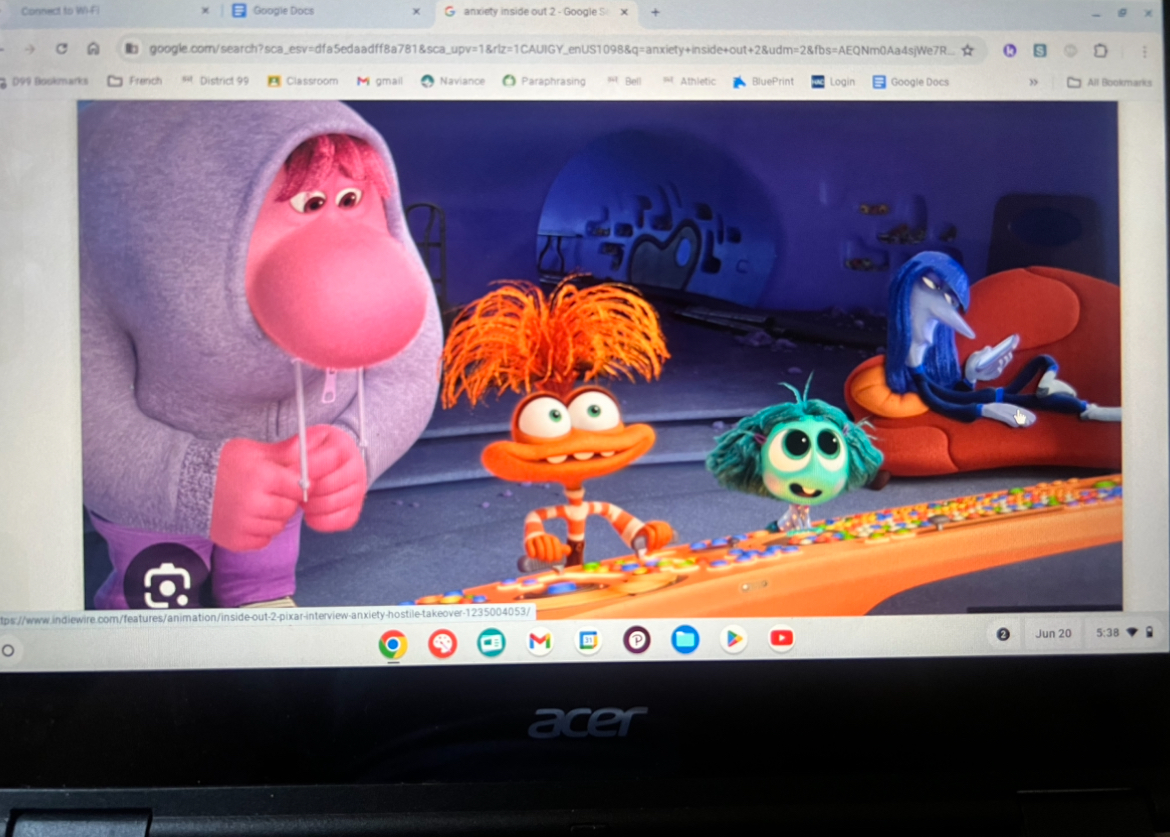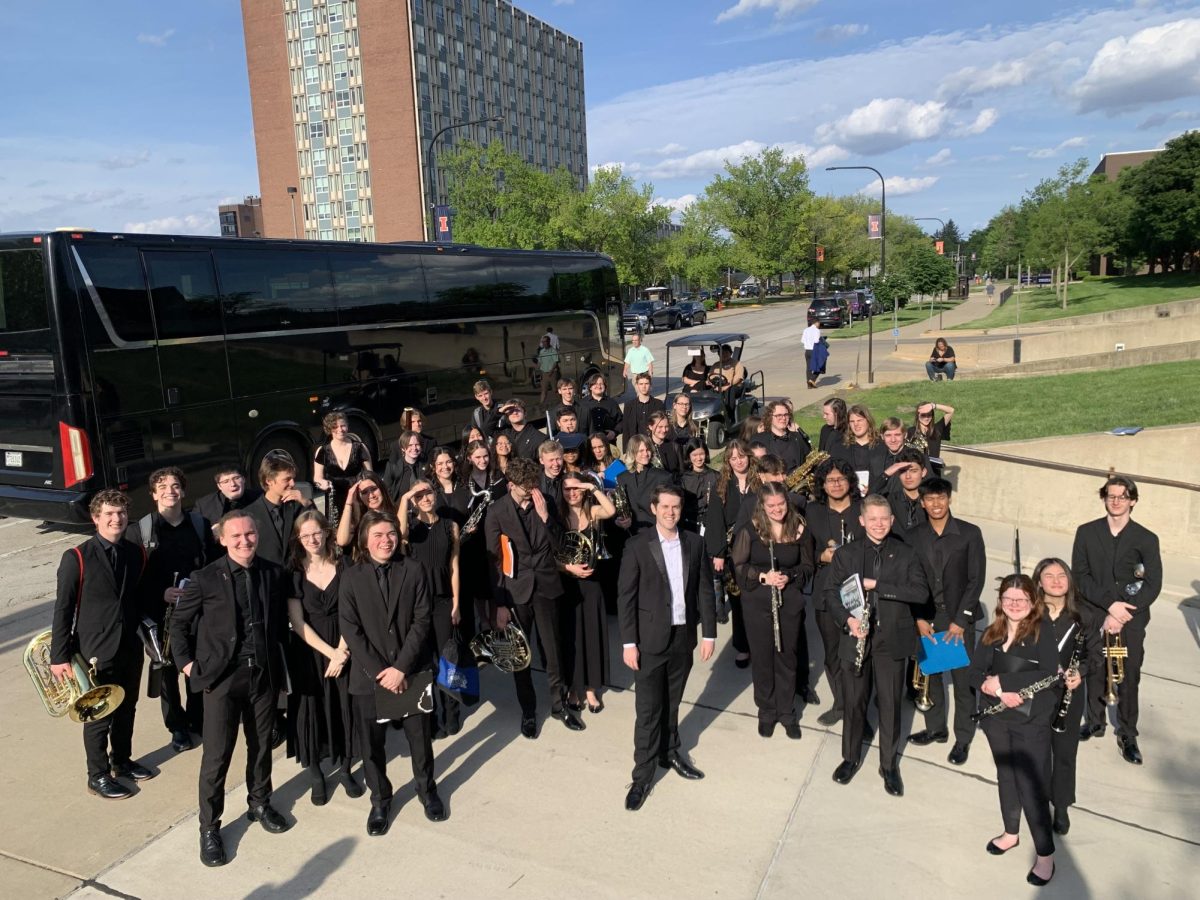North v.s. South: Comparing campus cultures


Students prepare to finalize their schedules and they’re caught in a whirlwind of decisions. Counselors hurriedly prepare to resolve any schedule conflicts before making the final schedule. With so many possible permutations, creating the perfect schedule that fits every student’s needs isn’t easy.
Students have a variety of class choices at DGS, but some may wonder how DGN stacks up. The whole process starts with teachers crafting classes that they believe students will be interested in. DGS Associate Principal for Curriculum and Instruction Jacob Giblin explained this process.
“Our fine arts department actually [has] four new classes coming next year. Some are renames with a kind of reimagination and [one] new one. They propose it to me, and then we present that proposal to each side of the town’s department chairs,” Giblin said.
Giblin’s role is primarily to help facilitate the approval process.
“Ultimately, it then gets proposed to the school board who makes the final decision. If I or my colleague at [DGN] felt there was something repetitive about the course…we might deny it at that point.”
Giblin also discussed the potential differences between the courses ran at DGS and DGN
“It’s possible that after you sit with your counselor and all of the students over here and then they do the same at North and for whatever reason we get 40 students here and only three at North. It is possible it wouldn’t run at North,” Giblin said.
Sophomore Ali Abdullah voiced his opinions on the course selection process from the student perspective.
“I think they’re doing too much; we should just be able to select everything on our own,” Abdullah said.

Between the DGS and DGN high schools, there are no obvious differences in discipline policies that are enforced, but a big difference in the numbers and statistics between the two schools. DGS has consistently higher numbers in disciplinary data than DGN; granted that DGS has about 400 more students that currently attend the school.
The Chief Communication Officer for District 99 Jill Browning, on behalf of the Associate Principal at DGS Dr. Karen Taylor and Associate Principal at DGN Dr. Kelly Zuerner, can assure that all the policies between the two high schools are “fair.”
“North High and South High follow the same discipline policies, which are outlined in the Board of Education policies and the Student Parent Handbook… Across our district, we strive to adhere to fair and equitable discipline practices while always ensuring the safety of all of our students and staff,” Browning said.
The data has a bigger impact on the district than the policies that are placed. On the Illinois Report Card website, the data can be found between the two schools and realize comparisons with issues. For example, DGS in “All Discipline Action” has 150 total students and 202 total incidents; meanwhile, DGN in the same category has 75 total students and only 101 total incidents.
The district policies are updated every year and adjust to the data of the previous school year between both schools.
“Our deans, counselors and administrators examine our discipline data regularly. Every year, we present the data to a Parent Advisory committee for input, which helps shape our programs and interventions. Any recommendations for changes are presented to the Board of Education after the school year ends, typically in June, to be adopted for the following school year,” Browning said.
A comparison to observe is how both schools deal with student behavior. DGS senior Mia Passi gives some examples of situations where there is lack of discipline or consequences with students.
“I have witnessed security guards remind tables to pick up their trash, but there are too many students to approach and therefore the messes end up not getting cleaned. There have also been many times where students have parked illegally in the parking lot and not many students get away with it. Usually, security guards sticker your car with an obnoxious sticker,” Passi said.
DGN senior Izzy Folise gives her perspective on the same situations that Passi brought up.
“The deans usually come up and ask us to throw it away or the janitors clean it. Also, when we park in teachers’ spots we get one violation then a ticket and when we park on the side streets I’m pretty sure it’s just a ticket,” Folise said.
The conclusion to these situations are very similar, but DGN gets their dean involved with a minor issue like picking up trash.
DGS and sister school DGN are almost completely identical, sans one major difference: the retake and test correction procedures. At DGS, students can retake any test, but at DGN, they cannot.
These practices are different because the district’s blanket policy is simply that reassessment must be offered in some form. Each building can carry out that policy in whatever way they choose.
The official practice at DGS is that retakes are available for students who complete that assessment of learning on time. It doesn’t matter what grade a student gets on the first test; they can retake it and the better grade goes in the gradebook. DGS Associate Principal for Curriculum and Instruction Jacob Giblin spoke on what this looks like.
“The basic policy is students have the opportunity to complete activities that will earn them a retake for their assessment which must be completed within two weeks of when they receive the grade for the original exam. The activities are determined by departments/course teams,” Giblin said.
For DGN, though, the retake or test correction procedure varies by department. Unless a student has a specific plan before the year begins, they cannot retake tests, but certain teachers allow for test corrections where students can do some amount of work to reach a benchmark grade of 70 or 80.
For the DGN English department, the statement driving the test correction policy is simply “As a matter of practice, no student will earn a final grade on a summative assessment that is turned in on time without having had the opportunity to improve by incorporating specific, individualized feedback from the teacher.”
This means that although students might not have designated retakes, they are able to revise and improve upon their original grade if their work is done on time, which is similar to DGS’s procedure.
Students at each school tend to agree that the district should keep the policy the same across the board. DGN senior Grant Bowers spoke on how he would prefer DGS’s practice over the one his school currently has.
“It doesn’t affect me a ton, but for days where you’re unprepared to take a test or you missed a few days, it would be nice to have the option to retake it sometime so you don’t suffer for things that are out of your control. So I don’t like [DGN’s] policy; I think it should change. I think it would be beneficial for a lot of students to retest their knowledge and get another chance,” Bowers said.
For DGS senior Madilynn Corey, DGS’s retake procedure has saved her from a lot of pre-testing anxiety. She’s doing better in school this year as opposed to last year and believes the procedure has a lot to do with that.
“I think that the retake policy does play a big part in that because going into a test I’m not as stressed because I know I have the opportunity to retake it. So I’m not forgetting everything as soon as I walk into the room because I’m not as stressed about doing well on the test the first time around,” Corey said.
However, some students worry about the long-term effects of this practice. While administrators believe it mirrors the real world of second chances, students are concerned about how this procedure is preparing them for college. Corey spoke on whether or not she believes students would benefit more if the practice wasn’t in place.
“In high school, no. In the future, yes, because in college they aren’t going to give us an infinite amount of retakes, so I think that if you’re planning on going into college it’s not helpful at all, but for high school it’s fine,” Corey said.
When looking at DGS’s grade distribution from the past three years, it’s clear that the numbers have not changed and the D and F rates in particular are fairly low. However, one of the main reasons behind giving students a chance to retake is to help the individual students who think getting a D is acceptable.
“When we dig deeper we know that there is a high number of individual students who are earning maybe one D or one F. And so it’s our mission to help students not earn D’s and F’s. We also have heard anecdotally, from teachers and from students, that we have some students in our building who are comfortable earning a D… and teachers find that frustrating because teachers really want to help students be as successful as they can,” DGS Principal Arwen Lyp said.
Administrators recognize the risk of this practice, though. Students can dig themselves into a hole if they are retaking every test, as they will always be studying two units at once, and managing that will create an endless cycle of not doing things right the first time. The procedure is more of a safety net than something students should rely on.
“Students should focus on the front end, though, because if they are focused on only that back end, they are putting themselves in a very difficult position that is difficult to work from… if they studied it upfront and had a bad day, or it didn’t connect and maybe they missed one or two concepts, it’s easier to fill in one or two concepts as opposed to trying to fill in an entire unit. Because you kind of knew ‘well, maybe I’ll catch up later,’” Giblin said.
When it comes to whether or not the procedure will be in effect next year at DGN or DGS, Lyp emphasized that each building’s team chooses different focus areas each year, and DGS chose to make grading and reassessment their main focus last year. Things could change next year based on the data, student thoughts and what the buildings want to work on.
“So we are currently in the process of determining whether or not the practices will evolve for next year. We’re studying data trends, we’re meeting with focus groups of students, meeting with focus groups of teachers, and department chairs are leading and having conversations with teachers. Teachers are actually coming up with some really excellent ideas of how they could see it evolving to help increase student learning,” Lyp said.
Downers Grove South High School
1436 Norfolk St.
Downers Grove, IL 60516



















